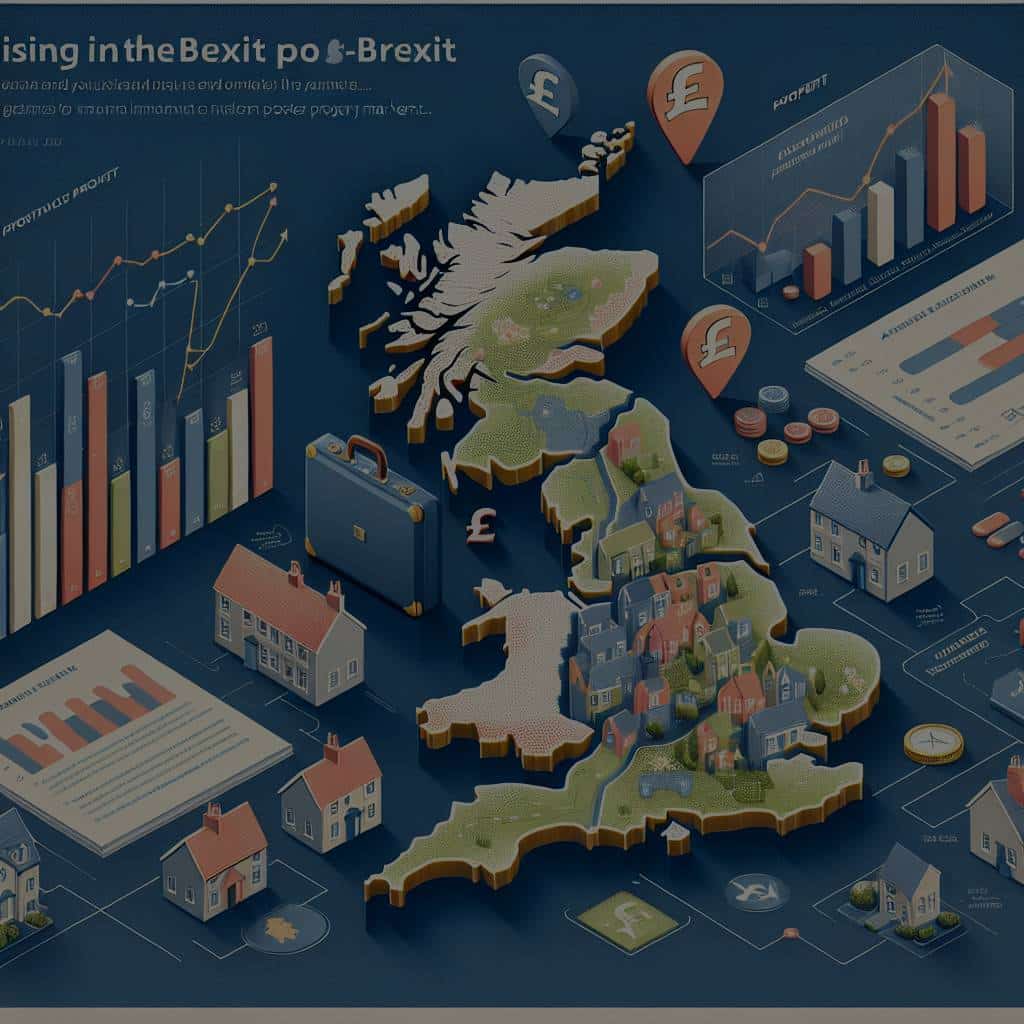How to Analyze and Invest in the UK’s Post-Brexit Property Market?

In the aftermath of Brexit, the United Kingdom’s property market has shown a unique resilience. While some predicted a significant impact on house prices and investor confidence, the reality has been far more nuanced. Today, we give you the tools to analyze and invest in the post-Brexit property market. We’ll delve into the key dynamics at play, including Brexit’s actual impact on the market, the role of government policies, and the prospects for future growth.
Understanding the Brexit Impact
The first step to investing in the post-Brexit property market is to understand the actual impact of Brexit. While there was a great deal of uncertainty leading up to the UK’s exit from the European Union, the property market has managed to weather the storm.
Have you seen this : What Advanced Techniques Can Be Used to Reinforce Coastal Properties Against Erosion?
Contrary to widespread worries, Brexit did not lead to a catastrophic collapse in house prices. In fact, there has been noticeable growth in certain parts of the country. This can be attributed to various factors. Firstly, the inherent demand-supply equation within the UK’s housing sector continues to favor the investment environment. There is a significant demand for property, especially in London, and this demand has not wavered significantly in the years following Brexit.
Moreover, Brexit seemed to trigger a renewed interest in the property market from overseas investors. With the fall in the value of the pound, UK property became an attractive prospect for foreign investors, boosting the demand in London’s real estate market.
Also to read : How to Implement a Green Roof Initiative for Urban Real Estate Developments?
Navigating Government Policies
To successfully invest in the post-Brexit property market, you also need to be aware of the government policies impacting the sector. The UK government has been primarily focused on ensuring the stability of the market in the wake of the Brexit uncertainty.
For instance, the government has implemented policies to incentivize first-time homebuyers, such as the Help to Buy scheme. These schemes have been instrumental in maintaining demand within the housing market, thereby stabilizing prices.
Additionally, the government has introduced tax breaks for landlords and property investors in an attempt to encourage investment in real estate. These measures have made the property market a more attractive prospect for investors, both domestic and foreign.
Forecasting Future Growth
Investing in the property market involves a long-term perspective. Therefore, while understanding the current market dynamics is essential, forecasting future growth trends is equally important.
Despite the initial uncertainty surrounding Brexit, the UK property market has shown remarkable resilience. Aided by government measures and driven by a solid demand, the market has witnessed consistent growth in the years following Brexit.
According to some financial analysts, the UK property market is poised for significant growth over the next few years. The market is predicted to grow by an average of 2.5% per year over the next five years, with some areas expecting to see growth rates of up to 4%.
While London remains a prime location for property investors, other regions in the UK are also showing promising signs. Cities like Birmingham, Manchester, and Leeds have seen above-average house price growth in the past few years, indicating a broadening investment landscape.
Leveraging Investment Opportunities
Taking into consideration the aforementioned factors, it is apparent that there are ample opportunities for investing in the UK’s post-Brexit property market.
For domestic investors, the government incentives coupled with steady market growth make for an attractive investment environment. For foreign investors, the relative affordability of UK property due to the depreciation of the pound adds an additional incentive.
Investors can also benefit from diversifying their portfolio across various regions in the UK. While London remains a prime investment location, exploring opportunities in other rapidly growing cities can yield significant returns.
Handling Market Uncertainty
Investing in the property market, like any other form of investment, comes with its share of risks. The most significant of these is market uncertainty. While the UK property market has shown resilience post-Brexit, there is always the potential for unforeseen changes in market dynamics.
However, this uncertainty can be mitigated through careful analysis and planning. Regularly monitoring market trends, staying updated with government policies, and assessing potential risks can help investors navigate the market confidently.
Furthermore, diversification can play a crucial role in managing investment risks. By spreading investments across different regions and property types, investors can hedge against potential downturns and maximize their returns in the long run.
Exploring Commercial Real Estate Opportunities
Post-Brexit, there are also plenty of opportunities to be found in the commercial real estate sector of the UK. This market has shown impressive resilience despite the initial uncertainties surrounding the Brexit vote.
In the aftermath of Brexit, the commercial property market, like the residential market, has also benefited from the depreciation of the pound. The weakened sterling has attracted international investors, who see UK commercial property as an attractive and relatively affordable investment. This increased demand has boosted the sector, leading to steady price growth.
In particular, the office space market in London has remained robust. Despite fears that companies would move their offices out of the UK due to Brexit, London continues to be a major global business hub. This has maintained a steady demand for office space, making it a promising area for investment.
Furthermore, the retail and industrial sectors also offer potential. With changes in consumer behaviour brought about by the pandemic, there has been a surge in demand for warehouse and distribution centres, making industrial property a worthy consideration for investors.
Also, investors can look to cities outside of London for commercial property investment. Places like Manchester, Birmingham, and Leeds are witnessing increased commercial activity and offer good investment opportunities. As with any property investment, due diligence, including tax legal considerations and understanding local market dynamics, is essential.
Conclusion: Solidifying Your Investment Strategy in the Post-Brexit Era
In conclusion, the United Kingdom’s property market has proven to be resilient and adaptable in the face of Brexit. Contrary to initial fears, the market has not only survived but thrived in many aspects, offering ample opportunities for both domestic and international investors.
Both the housing market and commercial real estate sectors have demonstrated consistent growth post-Brexit. The key to successful property investment in this new era lies in understanding the various market dynamics at play, including the impact of Brexit, government policies like stamp duty changes, and the current state of the UK economy.
Emphasizing on diversification, investors can mitigate risks and enhance potential returns by spreading their investments across different regions of the UK and different types of property. The fundamentals of the market remain solid, indicated by steady house prices and demand exceeding supply.
With careful analysis, informed decision-making, and a long-term perspective, investors can successfully navigate the post-Brexit property market. As the Bank of England maintains a stable economic environment and the government implements policies to support the sector, the future of the UK’s property market continues to look promising. Armed with the tools provided in this article, you are now better equipped to seize the investment opportunities that lie in the post-Brexit era.
